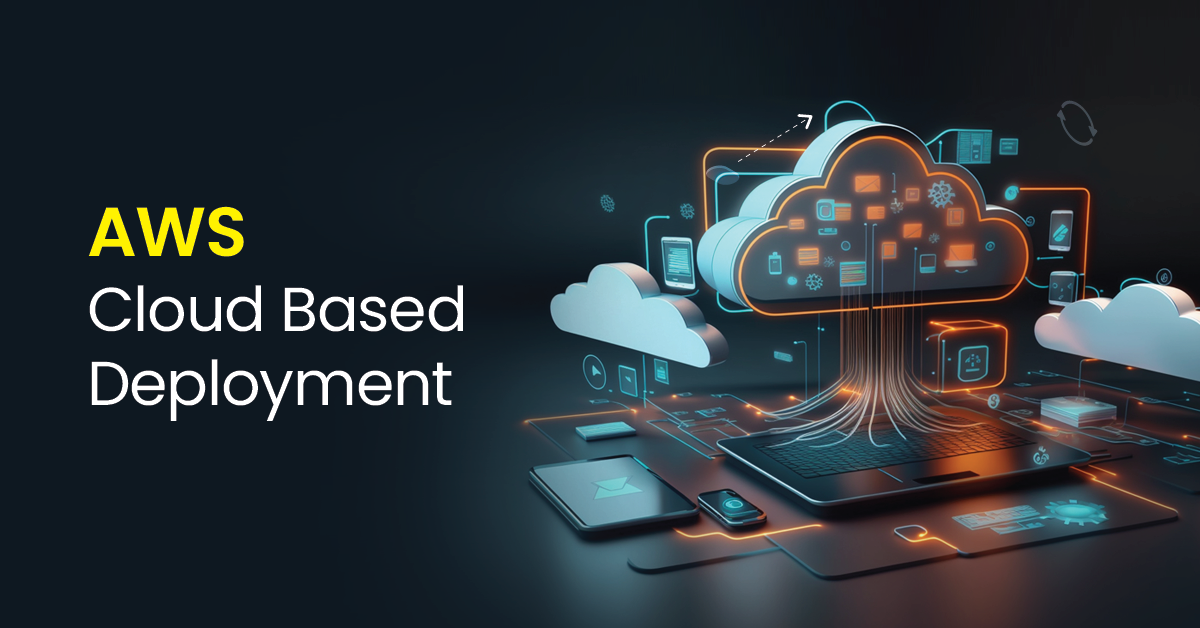In the modern technological era, the transition to the cloud has redefined how businesses and individuals access and utilize IT resources. Moving away from the traditional model of owning and managing physical infrastructure, cloud computing offers a flexible, scalable, and cost-effective alternative by delivering technology capabilities as services over the internet. At the heart of the cloud computing revolution lies a diverse array of offerings, collectively known as the services of cloud computing. These services are the tangible products and capabilities that cloud providers make available, allowing users to consume computing power, storage, applications, and more without the burden of underlying infrastructure management. Understanding the different types of cloud services available and what each entails is crucial for organizations looking to leverage the cloud effectively, optimize their IT operations, and drive innovation. While the spectrum of cloud computing services is vast and ever-expanding, they are commonly categorized into key models, each offering different levels of control and convenience. This comprehensive guide will explore the core services of cloud computing, detailing the foundational IaaS, PaaS, and SaaS models, discussing specialized cloud computing services that cater to specific needs, explaining the interplay between these models, and highlighting the significant benefits of cloud services for users worldwide.
Toc
Understanding the Core Services of Cloud Computing: IaaS, PaaS, and SaaS

The foundation of cloud computing rests on the ability to deliver IT capabilities as accessible services over the internet. These services of cloud computing represent the shift from owning technology infrastructure to consuming it on demand. To understand this shift, it is essential to grasp the primary ways these services are packaged and offered to users.
Defining Cloud Computing Services: What Does the Cloud Deliver?
Cloud computing services refer to the range of IT capabilities, resources, and applications that cloud service providers make available to users over a network, typically the internet. Instead of investing in physical hardware and software licenses, organizations can access these services remotely, paying based on usage rather than upfront purchase. This model of delivery allows users to tap into computing power, storage, databases, networking, and specialized tools without the complexity and expense of managing the underlying physical infrastructure.
The essential characteristic of cloud computing services is that they are delivered as a utility. Users can provision resources quickly, scale their consumption up or down based on demand, and access services from virtually any location with an internet connection. This on-demand, elastic, and measured nature fundamentally changes how IT resources are acquired and utilized. Cloud computing services empower businesses to reduce capital expenditures, improve operational efficiency, accelerate deployment times, and focus their internal resources on core business activities rather than IT maintenance. The vast landscape of services of cloud computing allows organizations to select exactly the capabilities they need, from fundamental compute power to complex machine learning algorithms, all delivered and managed by the cloud provider to varying degrees, representing a major paradigm shift in technology adoption.
The Foundational Layers: Infrastructure as a Service (IaaS) Explained
One of the most fundamental types of cloud services is Infrastructure as a Service (IaaS). IaaS represents the most basic category of cloud computing services, providing the foundational building blocks of IT infrastructure over the internet. It abstracts users away from the complexities of managing physical hardware while still offering a high degree of control over the operating system and applications.
Infrastructure as a Service delivers virtualized computing resources over the internet. Instead of buying physical servers, storage devices, and networking equipment, users rent these resources from a cloud provider as a service. Key components typically offered as IaaS include:
- Virtual Machines (VMs) or Instances: Virtual servers that users can provision and configure with their choice of operating system and software. This provides the raw compute power.
- Storage: Various types of virtual storage, such as block storage (like hard drives for VMs), object storage (for unstructured data like files and media), and file storage.
- Networking: Virtual networking components like virtual private clouds (VPCs), subnets, IP addresses, routers, and virtual firewalls, allowing users to build their own network topography in the cloud.
In the IaaS model, the cloud provider is responsible for the underlying physical cloud infrastructure – the data centers, servers, storage hardware, and networking equipment. The user, however, is responsible for managing the operating system, applications, middleware, and data running on the virtualized resources they provision. This provides a high level of flexibility and control, allowing organizations to migrate to the cloud while maintaining significant control over their software stack. The benefits of cloud services delivered as IaaS include significant cost savings compared to buying and maintaining physical infrastructure, enhanced scalability to adjust compute and storage capacity as needed, and greater flexibility in deploying various workloads. IaaS is a core component within the services of cloud computing.
Building and Deploying: Platform as a Service (PaaS) Unpacked

Moving up the stack of cloud computing services, we find Platform as a Service (PaaS). PaaS builds upon IaaS, providing a layer of abstraction that simplifies the development, testing, and deployment of applications by offering a complete platform and environment for developers.
Platform as a Service provides a runtime environment for applications, along with middleware, development tools, database management systems, and other services needed to build and run applications. The cloud provider manages the underlying infrastructure (servers, operating systems, networking) and the platform software itself, allowing developers to focus entirely on writing and deploying their code without worrying about managing the infrastructure or even the operating system. Examples of cloud computing services offered as PaaS include:
2. https://sanduocpham.com.vn/mmoga-the-foundation-of-modern-it-understanding-cloud-computing-aws/
3. https://sanduocpham.com.vn/mmoga-understanding-the-role-of-cloud-computing-providers/
4. https://sanduocpham.com.vn/mmoga-at-the-core-lets-define-cloud-computing/
- Managed Databases: Services where the provider handles database setup, patching, backups, and scaling (e.g., relational databases, NoSQL databases as a service).
- Application Runtime Environments: Platforms for running specific types of applications or code (e.g., web application platforms, container orchestration services).
- Serverless Functions: Services that allow developers to run code in response to events without provisioning or managing servers (e.g., Function as a Service or FaaS, often considered a subset of PaaS).
The PaaS model significantly accelerates the application development lifecycle. Developers don’t need to spend time setting up servers, installing operating systems, or configuring middleware; they can simply deploy their code to the platform. The benefits of cloud services delivered as PaaS include increased developer productivity, faster time to market for applications, reduced operational overhead related to infrastructure management, and inherent scalability provided by the platform. PaaS is an essential category within the services of cloud computing for organizations focused on software development and deployment.
The Application Layer and Beyond: Software as a Service (SaaS) and Specialized Cloud Computing Services

The highest level of abstraction in the traditional cloud service models is Software as a Service. Beyond these core models, the landscape of services of cloud computing extends to numerous specialized offerings catering to specific technology domains, illustrating the vast potential of the cloud.
Ready-to-Use Solutions: Software as a Service (SaaS) in Detail
Software as a Service (SaaS) represents the delivery of complete software applications over the internet on a subscription basis. In this model, the cloud provider hosts and manages the entire application, including the underlying infrastructure, operating system, middleware, and the application software itself. Users access the application via a web browser or a client application, without needing to install or manage anything on their own devices.
Software as a Service provides ready-to-use cloud applications that address specific business or personal needs. Examples are ubiquitous and include:
- Customer Relationship Management (CRM) software: (e.g., Salesforce, HubSpot)
- Email and Collaboration Suites: (e.g., Google Workspace, Microsoft 365)
- Enterprise Resource Planning (ERP) systems:
- Project Management Tools:
- Web-based Design Software:
In the SaaS model, the user’s responsibility is primarily limited to using the application and managing their data within the application (although data security responsibility is shared to some extent). The cloud provider handles all aspects of software maintenance, updates, security patching, and infrastructure management. The benefits of cloud services delivered as SaaS include extreme ease of deployment and access, no need for software installation or maintenance, automatic updates and patches, accessibility from anywhere with an internet connection, and a predictable subscription cost. SaaS represents the highest level of abstraction in the services of cloud computing, providing finished cloud applications directly to end-users.
Exploring Specialized Services of Cloud Computing (Analytics, AI/ML, etc.)
While IaaS, PaaS, and SaaS provide a foundational way to categorize cloud computing services, the actual landscape of services of cloud computing offered by major providers is far more extensive, including numerous specialized services that address specific technology domains and enable advanced capabilities. These specialized offerings allow organizations to leverage cutting-edge technologies without building the complex infrastructure or acquiring deep expertise in-house.
Examples of specialized types of cloud services include:
- Analytics Services: Services for collecting, processing, storing, and analyzing large volumes of data, such as data warehousing services, big data processing platforms, and data visualization tools.
- Machine Learning and Artificial Intelligence (AI/ML) Services: Providing access to pre-trained AI models (e.g., for image recognition, natural language processing) or platforms and tools for building, training, and deploying custom machine learning models.
- Internet of Things (IoT) Services: Platforms for connecting, managing, and processing data from IoT devices.
- Blockchain as a Service: Services for building and deploying blockchain networks without managing the underlying infrastructure.
- Developer Tools: Services for source code management, continuous integration/continuous delivery (CI/CD), and application monitoring.
- Security Services: Tools for identity and access management, threat detection, security monitoring, and compliance management within the cloud environment.
These specialized cloud computing services often build upon the underlying IaaS or PaaS layers but offer highly tailored functionalities. They represent the evolution of cloud computing services, moving beyond core IT resources to deliver advanced capabilities that can accelerate innovation and enable new business models. Leveraging these specialized services of cloud computing allows organizations to quickly adopt and experiment with emerging technologies on a pay-per-use basis, reducing the barriers to entry for complex technological domains.
Interplay of Cloud Service Models: How IaaS, PaaS, and SaaS Work Together
While the cloud service models (IaaS, PaaS, SaaS) are often described as distinct layers, in reality, organizations frequently utilize a combination of these types of cloud services within their overall cloud strategy. Different components of a single application or different applications within an organization’s portfolio might reside on different service models, demonstrating the interconnectedness within the services of cloud computing.
For example, a business might use Infrastructure as a Service (IaaS) (like virtual machines) to host legacy applications that require a high degree of control over the operating system. Simultaneously, they might use a Platform as a Service (PaaS) database service for new application development, leveraging the managed nature of the service to speed up deployment. Users might then access the data processed by these applications through a Software as a Service (SaaS) business intelligence tool or a custom-built internal cloud application hosted on a PaaS platform.
This blended approach allows organizations to select the most appropriate cloud service models for each specific workload or application, balancing control, development speed, and convenience. The underlying cloud infrastructure provided by the cloud provider supports all these layers, enabling seamless integration between different types of cloud services. Understanding this interplay is key to designing effective cloud architectures and maximizing the benefits of cloud services across an organization’s entire IT landscape. The services of cloud computing are not used in isolation but are combined strategically to meet diverse requirements.
Choosing and Leveraging the Right Types of Cloud Services

2. https://sanduocpham.com.vn/mmoga-understanding-the-role-of-cloud-computing-providers/
3. https://sanduocpham.com.vn/mmoga-understanding-the-foundation-what-is-aws-cloud-computing/
4. https://sanduocpham.com.vn/mmoga-the-foundation-of-modern-it-understanding-cloud-computing-aws/
5. https://sanduocpham.com.vn/mmoga-understanding-the-imperative-data-security-in-cloud-computing/
The vast array of services of cloud computing offers immense possibilities, but it also presents the challenge of choosing the right types of cloud services for specific needs. Understanding the overarching benefits of cloud services and developing a strategy for selection is crucial for successful cloud adoption.
Key Benefits of Cloud Services: Driving Efficiency and Innovation
Regardless of the specific service model (IaaS, PaaS, SaaS) or specialized offering, the services of cloud computing provide several overarching benefits that drive their widespread adoption and transform how businesses operate.
- Cost Savings: Moving from a CapEx model (buying hardware) to an OpEx model (paying for services of cloud computing based on usage) can significantly reduce upfront costs and allow for better budget management. The pay-as-you-go model, combined with the ability to scale resources up or down, eliminates wasteful spending on idle capacity.
- Scalability and Elasticity: Cloud computing services offer unprecedented ability to scale IT resources rapidly and elastically in response to changing demand. This ensures applications can handle peak loads and allows businesses to grow without being constrained by infrastructure limitations.
- Agility and Speed: Provisioning cloud computing services takes minutes, enabling developers and IT teams to deploy applications and test new ideas much faster than in traditional environments. This accelerates innovation and time to market.
- Reliability and High Availability: Cloud providers build their infrastructure with redundancy and fault tolerance in mind (e.g., using multiple data centers and Availability Zones), offering higher levels of reliability and availability for applications running on their services of cloud computing compared to many on-premises solutions.
- Flexibility: The wide variety of types of cloud services available allows organizations to choose the technologies and platforms that best fit their specific needs, avoiding vendor lock-in at lower layers of the stack.
- Focus on Core Business: By offloading the management of underlying infrastructure and platform components to the cloud provider, organizations can free up internal IT resources to focus on strategic initiatives and core business functions.
These compelling benefits of cloud services are the primary drivers for organizations embracing the services of cloud computing and reshaping their IT strategies.
Selecting the Appropriate Types of Cloud Services for Your Needs
With the range of services of cloud computing available, choosing the right types of cloud services (IaaS, PaaS, SaaS, or specialized) is a critical strategic decision based on the organization’s specific requirements, technical capabilities, and goals.
The choice often depends on the desired level of control versus convenience:
- Choose Infrastructure as a Service (IaaS) when you need maximum control over the operating system, middleware, and application stack, such as for migrating existing applications to the cloud (“lift and shift”) or running custom software that requires specific configurations. You manage the OS and above.
- Choose Platform as a Service (PaaS) when your primary focus is on application development and deployment, and you want to reduce the burden of managing underlying infrastructure and operating systems. You manage your code and data.
- Choose Software as a Service (SaaS) when you need a ready-to-use application and do not want to manage any IT infrastructure, platform, or even the software application itself. You simply use the application.
- Choose Specialized Services (like AI/ML, Analytics, IoT) when you need to leverage advanced technologies but lack the in-house expertise or infrastructure to build them yourself. You consume these capabilities as a service.
Organizations often use a mix of these types of cloud services. The key is to assess the specific needs of each workload or application and select the model or service that provides the optimal balance of control, development speed, operational overhead, and cost. Consulting with cloud experts can help navigate the vast landscape of services of cloud computing and make informed strategic decisions about which types of cloud services best meet your organization’s objectives.
The Future of Cloud Computing Services: Evolution and Specialization
The landscape of services of cloud computing is not static; it is continuously evolving and expanding. The future of cloud computing services promises increasing specialization, greater abstraction, and wider reach, further enhancing the benefits of cloud services for users.
We are seeing a trend towards more granular and specialized types of cloud services. Serverless computing (like FaaS) continues to grow, abstracting away even the operating system layer for many applications. New specialized services are constantly emerging in areas like quantum computing, robotics, space technology, and industry-specific solutions (e.g., cloud services for healthcare, finance, manufacturing), tailored to the unique needs of those sectors.
The reach of cloud computing services is also expanding beyond centralized data centers to the “edge,” with services designed to run closer to where data is generated or consumed (e.g., on IoT devices, in local facilities), addressing use cases requiring low latency or local data processing. This evolution means the range of services of cloud computing will continue to grow, offering ever more specific capabilities delivered on demand. Staying abreast of these developments and understanding the new types of cloud services as they emerge will be crucial for organizations looking to remain at the forefront of technological innovation and continue leveraging the full potential of cloud computing. The future promises an even richer ecosystem of cloud computing services to explore.
In conclusion, the services of cloud computing represent the diverse range of IT capabilities delivered over the internet, transforming how technology is consumed. The core types of cloud services are Infrastructure as a Service (IaaS), providing virtualized hardware, Platform as a Service (PaaS), offering a development environment, and Software as a Service (SaaS), delivering ready-to-use applications. Beyond these foundational models, numerous specialized services of cloud computing cater to specific domains like analytics, AI/ML, and IoT. Understanding these different types of cloud services is crucial for leveraging the significant benefits of cloud services, including cost savings, scalability, agility, and reliability. Choosing the appropriate types of cloud services involves assessing needs and balancing control versus convenience. The landscape of services of cloud computing is continuously evolving, with increasing specialization promising even greater capabilities and benefits of cloud services for the future of cloud computing.















